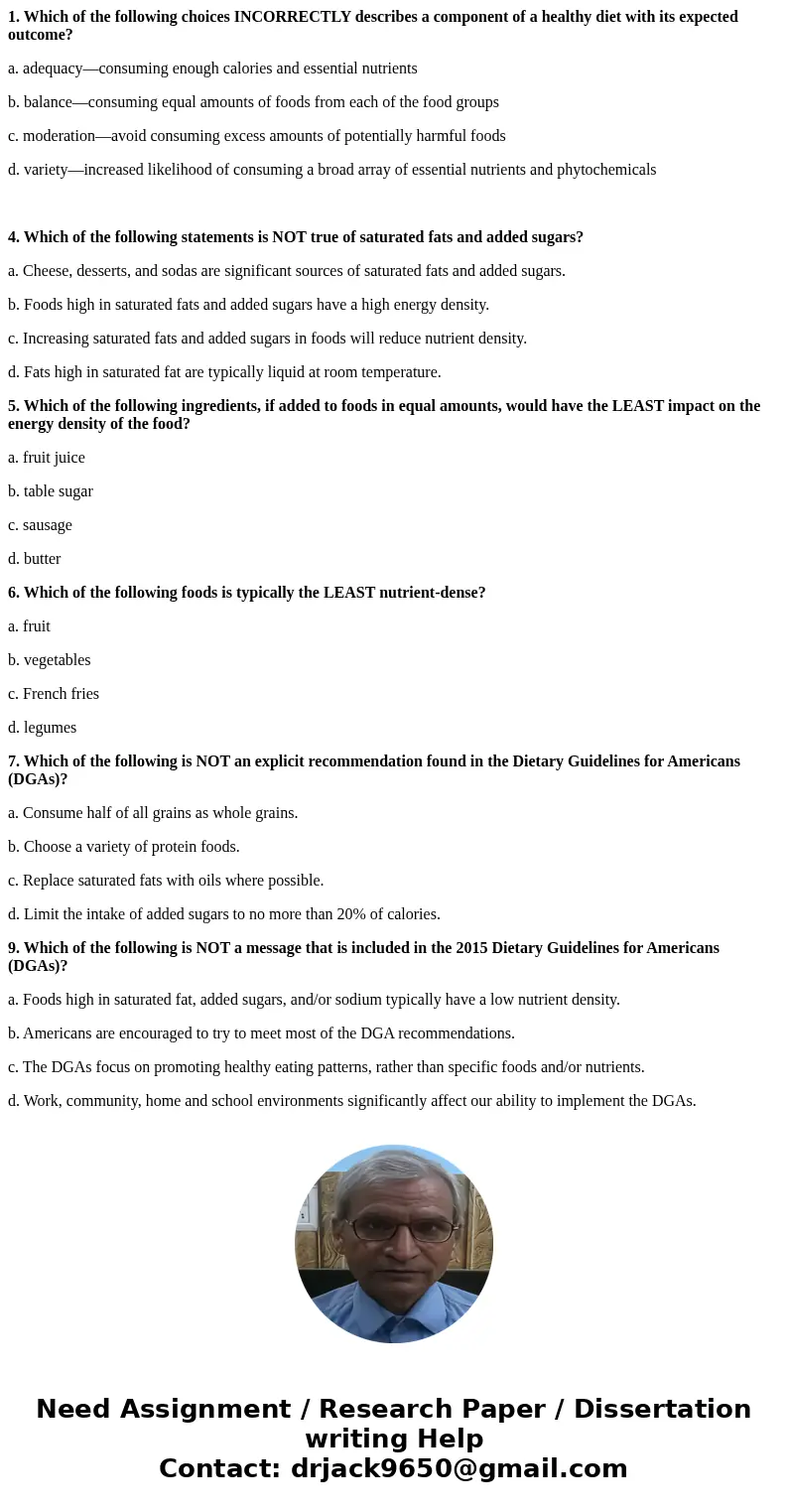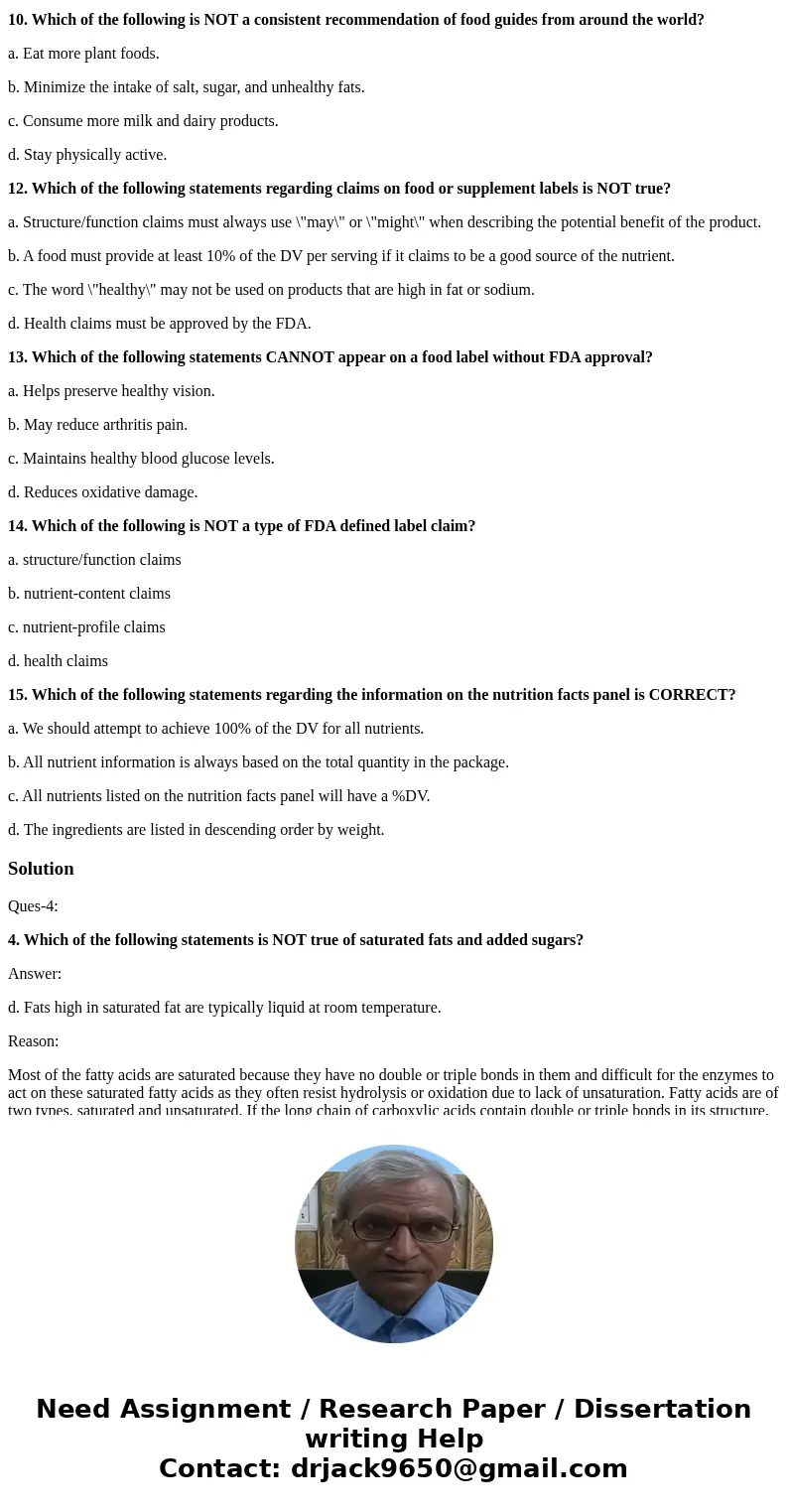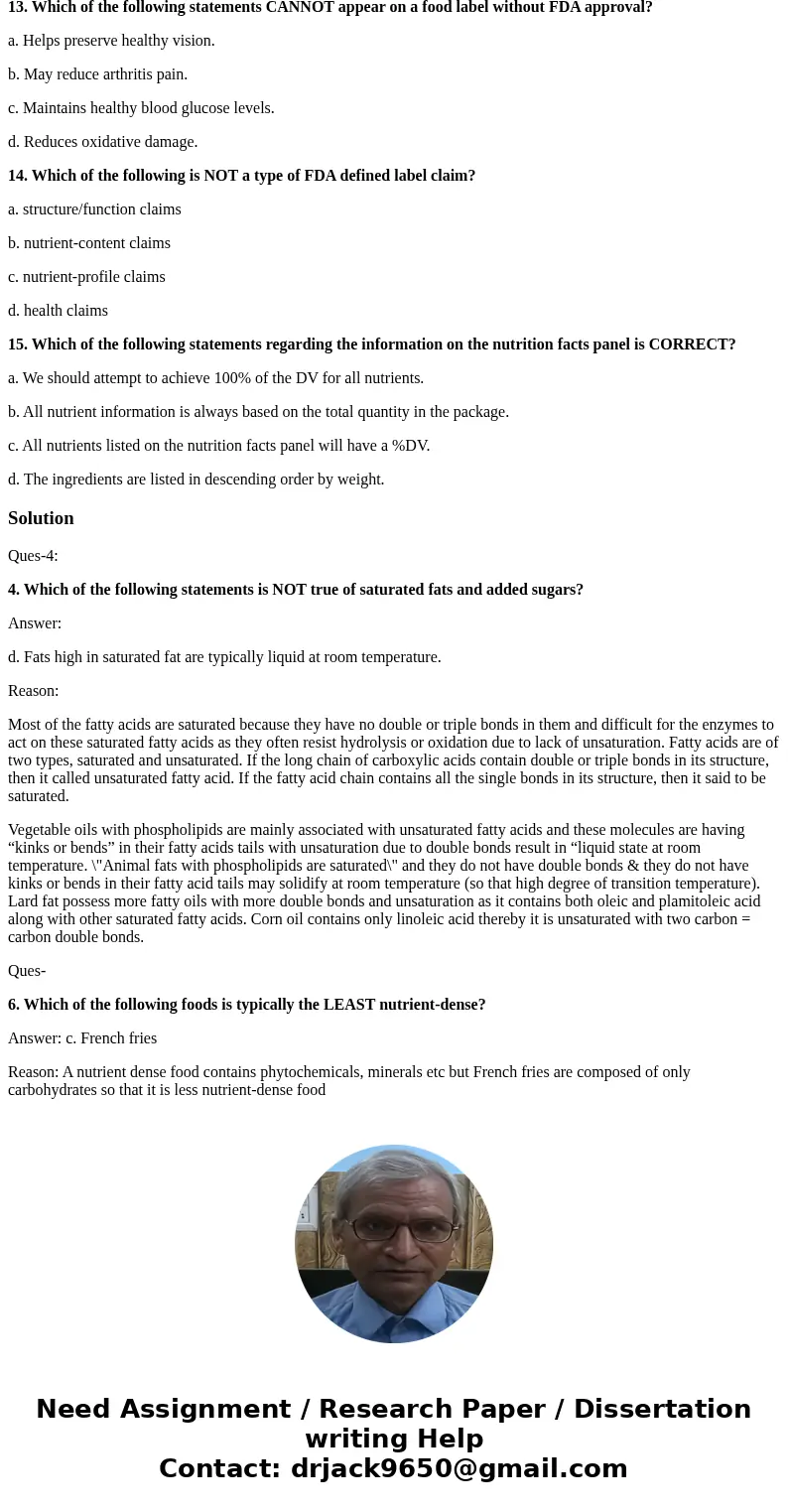1 Which of the following choices INCORRECTLY describes a com
1. Which of the following choices INCORRECTLY describes a component of a healthy diet with its expected outcome?
a. adequacy—consuming enough calories and essential nutrients
b. balance—consuming equal amounts of foods from each of the food groups
c. moderation—avoid consuming excess amounts of potentially harmful foods
d. variety—increased likelihood of consuming a broad array of essential nutrients and phytochemicals
4. Which of the following statements is NOT true of saturated fats and added sugars?
a. Cheese, desserts, and sodas are significant sources of saturated fats and added sugars.
b. Foods high in saturated fats and added sugars have a high energy density.
c. Increasing saturated fats and added sugars in foods will reduce nutrient density.
d. Fats high in saturated fat are typically liquid at room temperature.
5. Which of the following ingredients, if added to foods in equal amounts, would have the LEAST impact on the energy density of the food?
a. fruit juice
b. table sugar
c. sausage
d. butter
6. Which of the following foods is typically the LEAST nutrient-dense?
a. fruit
b. vegetables
c. French fries
d. legumes
7. Which of the following is NOT an explicit recommendation found in the Dietary Guidelines for Americans (DGAs)?
a. Consume half of all grains as whole grains.
b. Choose a variety of protein foods.
c. Replace saturated fats with oils where possible.
d. Limit the intake of added sugars to no more than 20% of calories.
9. Which of the following is NOT a message that is included in the 2015 Dietary Guidelines for Americans (DGAs)?
a. Foods high in saturated fat, added sugars, and/or sodium typically have a low nutrient density.
b. Americans are encouraged to try to meet most of the DGA recommendations.
c. The DGAs focus on promoting healthy eating patterns, rather than specific foods and/or nutrients.
d. Work, community, home and school environments significantly affect our ability to implement the DGAs.
10. Which of the following is NOT a consistent recommendation of food guides from around the world?
a. Eat more plant foods.
b. Minimize the intake of salt, sugar, and unhealthy fats.
c. Consume more milk and dairy products.
d. Stay physically active.
12. Which of the following statements regarding claims on food or supplement labels is NOT true?
a. Structure/function claims must always use \"may\" or \"might\" when describing the potential benefit of the product.
b. A food must provide at least 10% of the DV per serving if it claims to be a good source of the nutrient.
c. The word \"healthy\" may not be used on products that are high in fat or sodium.
d. Health claims must be approved by the FDA.
13. Which of the following statements CANNOT appear on a food label without FDA approval?
a. Helps preserve healthy vision.
b. May reduce arthritis pain.
c. Maintains healthy blood glucose levels.
d. Reduces oxidative damage.
14. Which of the following is NOT a type of FDA defined label claim?
a. structure/function claims
b. nutrient-content claims
c. nutrient-profile claims
d. health claims
15. Which of the following statements regarding the information on the nutrition facts panel is CORRECT?
a. We should attempt to achieve 100% of the DV for all nutrients.
b. All nutrient information is always based on the total quantity in the package.
c. All nutrients listed on the nutrition facts panel will have a %DV.
d. The ingredients are listed in descending order by weight.
Solution
Ques-4:
4. Which of the following statements is NOT true of saturated fats and added sugars?
Answer:
d. Fats high in saturated fat are typically liquid at room temperature.
Reason:
Most of the fatty acids are saturated because they have no double or triple bonds in them and difficult for the enzymes to act on these saturated fatty acids as they often resist hydrolysis or oxidation due to lack of unsaturation. Fatty acids are of two types, saturated and unsaturated. If the long chain of carboxylic acids contain double or triple bonds in its structure, then it called unsaturated fatty acid. If the fatty acid chain contains all the single bonds in its structure, then it said to be saturated.
Vegetable oils with phospholipids are mainly associated with unsaturated fatty acids and these molecules are having “kinks or bends” in their fatty acids tails with unsaturation due to double bonds result in “liquid state at room temperature. \"Animal fats with phospholipids are saturated\" and they do not have double bonds & they do not have kinks or bends in their fatty acid tails may solidify at room temperature (so that high degree of transition temperature). Lard fat possess more fatty oils with more double bonds and unsaturation as it contains both oleic and plamitoleic acid along with other saturated fatty acids. Corn oil contains only linoleic acid thereby it is unsaturated with two carbon = carbon double bonds.
Ques-
6. Which of the following foods is typically the LEAST nutrient-dense?
Answer: c. French fries
Reason: A nutrient dense food contains phytochemicals, minerals etc but French fries are composed of only carbohydrates so that it is less nutrient-dense food



 Homework Sourse
Homework Sourse